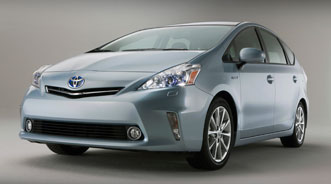Toyota Applauds National Academy of Sciences’ Study on Unintended Acceleration

Along with tabulating its North American production performance for 2011, Toyota also shared upbeat reaction the positive findings from a National Academy of Sciences’ National Research Council study about claims of unintended acceleration.
The Japanese OEM recalled the comprehensive 162-page report was commissioned by the National Highway Traffic Safety Administration to explore the broad issue of claims of unintended acceleration and their aftermath.
Officials acknowledged the report was prompted by unintended acceleration claims specific to Toyota but was commissioned to address the industry as a whole.
In the report, the NAS noted NHTSA decided to close its investigation of Toyota’s electronic throttle control system without finding evidence implicating the electronic throttle control system as a cause of unintended acceleration.
The NAS found that NHTSA’s decision to close the investigation was justified on the basis of NHTSA’s own investigative work, its analyses of thousands of consumer complaints, its in-depth examination of event data recorders in complaint vehicles and on the basis of NASA’s independent examination of Toyota’s electronic throttle control system.
In the independent review entitled “The Safety Promise and Challenges of Automotive Electronics: Insights from Unintended Acceleration,” the NAS also made recommendations about ways in which the NHTSA and the auto industry can work to assure the safety of electronic vehicle control functions.
“Toyota appreciates the NAS for its valuable work on vehicle electronics and the open process the NAS has maintained throughout its investigation,” OEMofficials declared.
“We share the goal of NAS and NHTSA to make America’s vehicles even safer, and we will continue to work collaboratively and constructively with regulators and lawmakers to help achieve the greatest possible benefits from the academy’s valuable work,” they added.
In a portion of the report available here, the NAS summarized the crux of its work and the issue.
“The NRC committee’s findings reveal how the electronics systems being added to automobiles present many opportunities to make driving safer but at the same time present new demands for ensuring the safe performance of increasingly complex vehicle technologies,” analysts began.
“The safety assurance demands pertain both to the automotive industry’s development and deployment of electronics systems and to NHTSA’s fulfillment of its safety oversight role. With regard to the latter, the committee recommends that NHTSA give explicit consideration to the oversight challenges arising from automotive electronics and develop and articulate a long-term strategy for meeting them. A successful strategy will reduce the chances of a recurrence of the kind of controversy that drove NHTSA’s response to questions about electronics causing unintended acceleration,” they continued.
“As electronics systems proliferate to provide more vehicle functions, neither industry nor NHTSA can afford such recurrences — nor can motorists,” they added.
Toyota’s 2011 North American Production Figures
Late last week, Toyota Motor Engineering & Manufacturing North America announced North American vehicle production for 2011.
Officials calculated TEMA built 1,255,635 vehicles and 1,141,466 engines.
“Despite a challenging year due to the earthquake and tsunami in Japan that caused limited parts availability, Toyota’s team members and supplying partners were able to ramp up production ahead of schedule,” stated Shigeki Terashi, president and chief operating officer of TEMA.
“This kind of commitment and customer-first spirit will set the stage for growth over the course of the year,” Terashi added.
Toyota pointed out it produces 12 models in North America: Avalon, Camry, Corolla, Highlander, Matrix, RAV4, Sequoia, Sienna, Tacoma, Tundra, Lexus RX350 and Venza.
In 2011, the following projects were completed:
—Toyota Motor Manufacturing, West Virginia completed an expansion resulting in increased 6 speed automatic transmission production bringing the plant’s total employment to approximately 1,100.
—Toyota Motor Manufacturing, Alabama began 4-cylinder engine production in the fall, resulting in 240 new jobs.
—Toyota Motor Manufacturing, Mississippi began Corolla production in the fall, adding 2,000 jobs.
In 2012, Toyota revealed two objectives:
—Build its 25 millionth vehicle in North America.
—Begin production of the EV RAV4 at its Woodstock, Ontario facility.

 View The Latest Edition
View The Latest Edition

